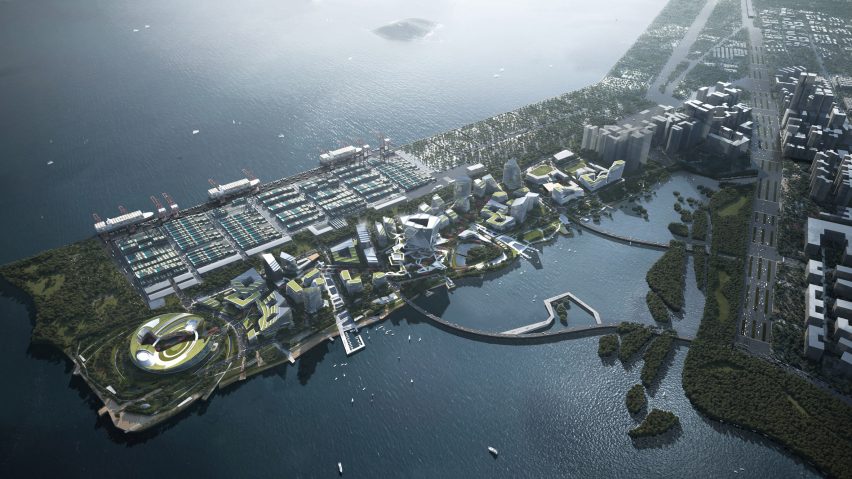
Giant Net City car-free neighbourhood in Shenzhen will cover two million square metres
Architect NBBJ has unveiled a masterplan for Net City, a car-free district in Shenzhen "roughly the size and shape of Midtown Manhattan" for Chinese technology company Tencent.
Set to cover two million square metres of land on a peninsular alongside the Dachan Bay shipping-container terminal, the development will include offices, homes, parks and entertainment venues.
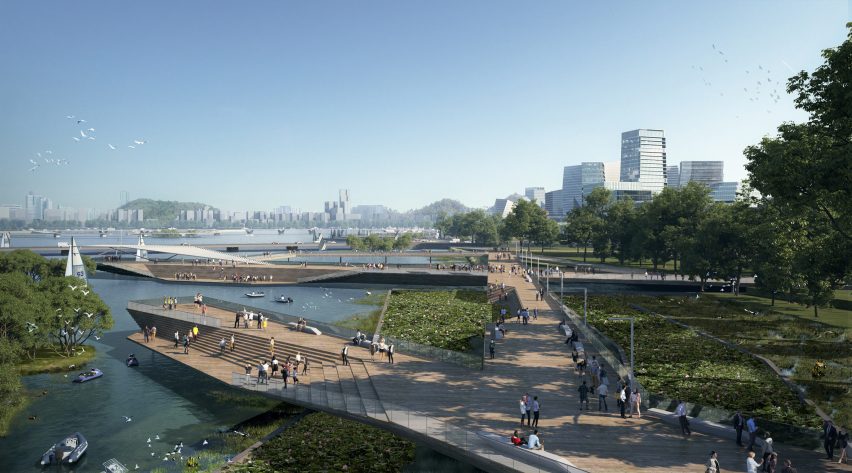
There will be no roads for cars in the district, which will be "roughly the size and shape of Midtown Manhattan" or two-and-a-half times better than Beijing's Forbidden City.
Instead, residents, commuters and visitors will connect to Shenzhen via subway and traverse Net City on foot or by bicycle. Ferries will provide public transport along the waterways.
Designing a car-free district is an opportunity to "rethink cities for being for and about people", said NBBJ.
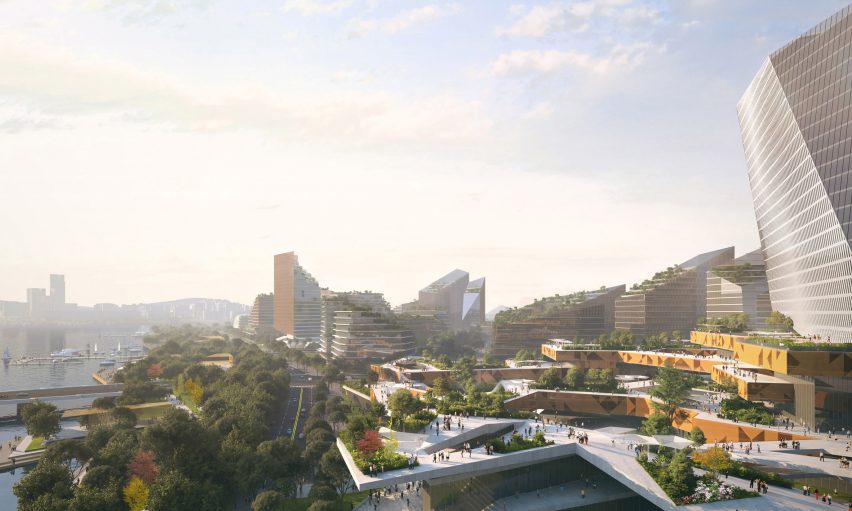
"Typical city planning is restricted because it's based almost entirely around a grid system for use by cars," NBBJ told Dezeen.
"Planning a city with very few cars provides more flexibility to create solutions that are organic and human-focused."
Terraced buildings will look towards the coast, ranging in height from one to 30 storeys. When complete the area should be able to accommodate up to 80,000 residents and workers.
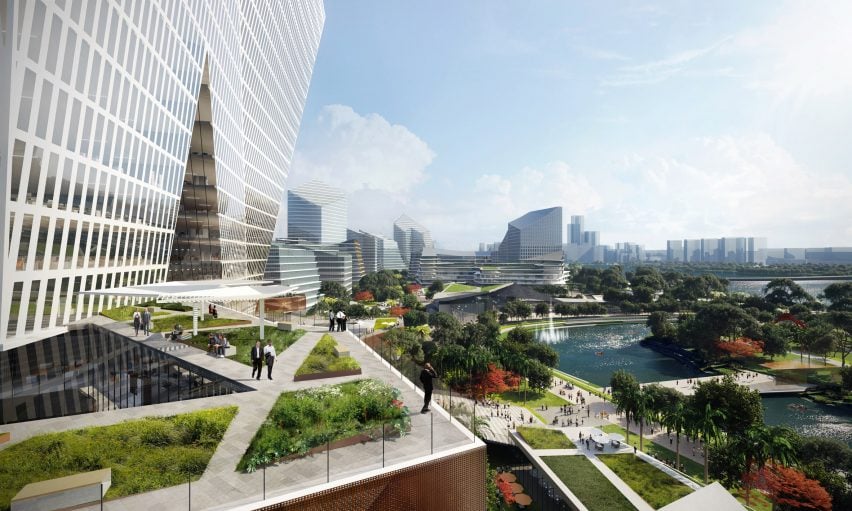
NBBJ plans to plant mangrove trees along the shore to act as a natural flood defence. Sensors will be used to track flooding.
Net City will form part of China's Sponge City initiative for new urban zones with more environmentally friendly types of flood defences and water management. NBBJ is planning water runoff management schemes.
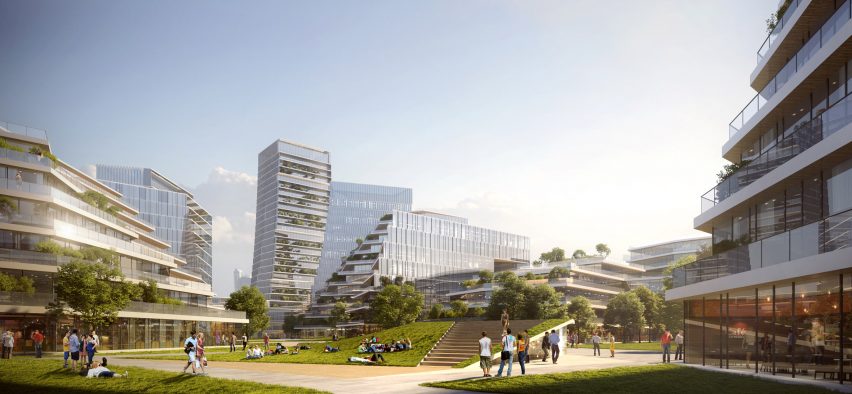
Solar panels will provide green energy for Net City. The project will be completed in three phases over the next seven years.
Tencent, owners of Chinese messaging service WeChat, is headquartered in Shenzhen. NBBJ designed the company's headquarters, which is formed of two towers connected by bridges on multiple levels.
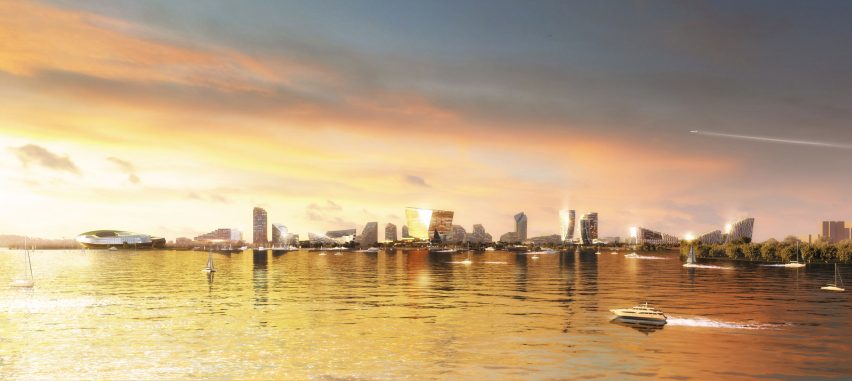
Founded in 1943 in Seattle, NBBJ has offices around the world. In 2016 the practice completed Samsung's California campus. The South Korean technology company's Silicon Valley outpost features nap pods and music rooms.
Dutch architecture firm MVDV is also planning a large scale low-rise development in Shenzhen.